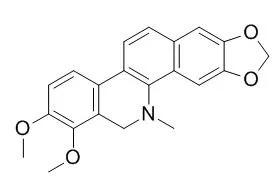
ChemFaces products have been cited in many studies from excellent and top scientific journals
Contact Us
Order & Inquiry & Tech Support
Tel: (0086)-27-84237683
Tech: service@chemfaces.com
Order: manager@chemfaces.com
Address: 176, CheCheng Eest Rd., WETDZ, Wuhan, Hubei 430056, PRC
How to Order
Orders via your E-mail:
1. Product number / Name / CAS No.
2. Delivery address
3. Ordering/billing address
4. Contact information
Order: manager@chemfaces.com
Delivery time
Delivery & Payment method
1. Usually delivery time: Next day delivery by 9:00 a.m. Order now
2. We accept: Wire transfer & Credit card & Paypal
Citing Use of our Products
* Packaging according to customer requirements(5mg, 10mg, 20mg and more). We shipped via FedEx, DHL, UPS, EMS and others courier.
According to end customer requirements, ChemFaces provide solvent format. This solvent format of product intended use: Signaling Inhibitors, Biological activities or Pharmacological activities.
| Size /Price /Stock |
10 mM * 1 mL in DMSO / $42.4 / In-stock |
Other Packaging |
*Packaging according to customer requirements(100uL/well, 200uL/well and more), and Container use Storage Tube With Screw Cap |
More articles cited ChemFaces products.
- Inflammation.2024, 02034-1.
- J AOAC Int.2024, qsae028.
- Neurotox Res.2022, 40(6):1937-1947.
- Food Funct.2022, 13(23):12105-12120.
- Evid Based Complement Alternat Me...2022...
- The Malaysian journal of patholog...2019...
- Synthetic and Systems Biotechnolo...2023...
- Korean J. Crop Sci.2018, 63(2):131-139
- Nutrients.2020, 12(12):3638.
- Molecules2022, 27(9):2992.
- Food Funct.2020, 11(2):1322-1333.
- Babol University of Medical Scien...2024...
- Nutrients2022, 14(3),695.
- Molecules.2023, 28(8):3503.
- Agronomy 2021, 11(3),502.
- Ind Crops Prod.2015, 67:185-191
- Asian J Beauty Cosmetol...2021...
- Food Chem.2024, 436:137768.
- Appl. Sci.2020, 10,1304
- Front Pharmacol.2022, 13:919230.
- Molecules. 2013, 18(7):7376-88
- Sci Rep.2021, 11(1):11936.
- Molecules.2022, 27(21):7643.
- More...
Our products had been exported to the following research institutions and universities, And still growing.
- University of Hawaii Cancer Center (USA)
- Institute of Chinese Materia Me... (China)
- Lund University (Sweden)
- Istanbul University (Turkey)
- Monash University Sunway Campus (Malaysia)
- Texas A&M University (USA)
- Martin Luther University of Hal... (Germany)
- Research Unit Molecular Epigene... (Germany)
- University of Pretoria (South Africa)
- Almansora University (Egypt)
- MTT Agrifood Research Finland (Finland)
- More...






 Cell. 2018 Jan 11;172(1-2):249-261.e12. doi: 10.1016/j.cell.2017.12.019.IF=36.216(2019)
Cell. 2018 Jan 11;172(1-2):249-261.e12. doi: 10.1016/j.cell.2017.12.019.IF=36.216(2019) Cell Metab. 2020 Mar 3;31(3):534-548.e5. doi: 10.1016/j.cmet.2020.01.002.IF=22.415(2019)
Cell Metab. 2020 Mar 3;31(3):534-548.e5. doi: 10.1016/j.cmet.2020.01.002.IF=22.415(2019) Mol Cell. 2017 Nov 16;68(4):673-685.e6. doi: 10.1016/j.molcel.2017.10.022.IF=14.548(2019)
Mol Cell. 2017 Nov 16;68(4):673-685.e6. doi: 10.1016/j.molcel.2017.10.022.IF=14.548(2019)